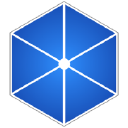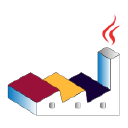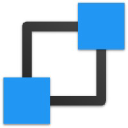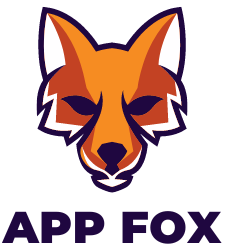Top 9 Software Architecture Tools in 2024
1. IcePanel
- Collaborative C4 modelling for visualizing software architectures
- Interactive diagrams with zoomable, detailed views
- Link diagrams to source control and cloud resources

IcePanel provides a collaborative and lightweight modelling tool for visualizing software architectures. With interactive diagrams and seamless integration with source control, IcePanel empowers teams to communicate complex system designs effectively.
Designed for technical and non-technical users, IcePanel offers a user-friendly platform for agile development teams looking to streamline their software architecture documentation and visualization.
2. Enterprise Architect
- Comprehensive features for managing SaaS applications
- Easy integration with financial and accounting software
- User-friendly interface for tracking application usage

Enterprise Architect offers a comprehensive solution for managing SaaS applications, making it easier for businesses to track usage, optimize budgets, and enhance overall productivity. With a user-friendly interface and flexible pricing options, it's a valuable tool for organizations of all sizes.
Businesses and independent users have lauded Enterprise Architect for its robust features and intuitive functionality, making it a top choice for streamlining SaaS management processes.
3. Archi
- Comprehensive monitoring of databases, web servers, and network traffic
- User-friendly interface for easy navigation and setup
- Effective anomaly detection and alarm management

Archi is a comprehensive monitoring solution designed to ensure the stability and performance of IT infrastructure, featuring robust database, web server, and network traffic monitoring capabilities. With user-friendly interface and efficient anomaly detection, Archi stands out as an invaluable tool for businesses.
Archi offers competitive pricing plans, customizable alerting and reporting features, and seamless integration, making it a top choice for proactive IT infrastructure management.
4. Structurizr
- Facilitates software architecture modeling using the Structurizr DSL
- Allows creation of multiple diagrams from a single model
- Supports cloud service for convenient access and collaboration

Structurizr is a cutting-edge software architecture modeling tool designed to streamline the process of creating and visualizing system designs. It offers robust features, seamless cloud integration, and intuitive functionality, making it an invaluable asset for software engineering teams and architects.
With Structurizr, you can effortlessly create, maintain, and communicate software architecture models, fostering better collaboration and informed decision-making throughout the development lifecycle.
5. PlantUML
- Simple and intuitive text-based diagramming language
- Flexible and versatile, supporting various diagram types
- Free to use, making it accessible for individuals and teams

PlantUML is a free and versatile software architecture visualization tool that offers a simple and intuitive text-based approach for creating a wide range of diagrams. Its robust features and user-friendly interface make it an excellent choice for individuals and teams seeking efficient diagramming solutions.
6. Ilograph
- Interactive and collaborative web-based platform
- Support for drawing diagrams and creating models simultaneously
- Auto layout of diagram objects for dynamic visualization

Ilograph is an innovative web-based software architecture modeling tool that offers interactive diagrams, agile modeling capabilities, and dynamic layout features. It provides a user-friendly and collaborative platform for drawing and visualizing software architecture.
With support for diagram sequences and overlaying metadata, Ilograph caters to the needs of both technical and semi-technical users, making it a versatile solution for visualizing complex software architectures.
7. Diagrams.net
- Intuitive and easy-to-use interface
- Free version available with robust features
- Real-time collaboration and sharing
- Wide range of templates for various chart types

Diagrams.net is a versatile flowchart software offering an intuitive interface, extensive template library, and real-time collaboration features. It is suitable for both individuals and businesses, with a free version available alongside paid plans offering advanced functionalities and support.
The tool's seamless integration with various applications and customizable options make it a reliable choice for creating flowcharts, diagrams, and more.
8. Lucidchart
- Intuitive interface for easy diagram creation
- Robust collaboration features for team projects
- Wide variety of templates and shapes for diverse diagram needs

Lucidchart is a leading online diagramming tool that offers an intuitive interface, collaborative capabilities, and a diverse range of templates and shapes. Whether you're a solo entrepreneur or part of a large corporation, Lucidchart provides the features and flexibility you need for visual communication and project collaboration.
9. Miro
- Highly versatile online whiteboard platform for collaborative teamwork
- Intuitive and user-friendly interface for easy visualization and diagram creation
- Supports real-time collaboration and brainstorming for remote teams

Miro is an innovative online whiteboard platform that facilitates real-time collaboration and seamless visual planning for businesses and independent professionals. With a user-friendly interface and a diverse range of features, Miro empowers teams to create interactive diagrams and streamline their brainstorming and diagram creation processes.
From remote teamwork to project management, Miro offers a comprehensive toolset for visualizing ideas, fostering creativity, and enhancing collaboration among team members, making it an indispensable asset for modern work environments.
FAQ
What are the key considerations when choosing software architecture tools for construction projects?
When choosing software architecture tools for construction projects, it is crucial to consider factors such as scalability, integration, and security. Additionally, ease of use and flexibility are also important to ensure smooth implementation and operation.
How do I determine the most suitable software architecture tool for my construction project?
To determine the most suitable software architecture tool for your construction project, evaluate the specific requirements of your project in terms of collaboration, visualization, and data management. Consider the ability to support complex structures and optimize workflows as well.
What role do software architecture tools play in construction project management?
Software architecture tools play a crucial role in construction project management by facilitating communication among stakeholders, streamlining design processes, and ensuring compliance with industry standards. They also enable efficient resource allocation and enhance decision-making through advanced analytics.
How can software architecture tools contribute to the overall efficiency of construction projects?
Software architecture tools contribute to the overall efficiency of construction projects by automating repetitive tasks, improving accuracy in design and planning, and providing real-time access to critical project data. They also optimize collaboration and minimize errors throughout the project lifecycle.

FAQ
When choosing software architecture tools for construction projects, it is crucial to consider factors such as scalability, integration, and security. Additionally, ease of use and flexibility are also important to ensure smooth implementation and operation.
To determine the most suitable software architecture tool for your construction project, evaluate the specific requirements of your project in terms of collaboration, visualization, and data management. Consider the ability to support complex structures and optimize workflows as well.
Software architecture tools play a crucial role in construction project management by facilitating communication among stakeholders, streamlining design processes, and ensuring compliance with industry standards. They also enable efficient resource allocation and enhance decision-making through advanced analytics.
Software architecture tools contribute to the overall efficiency of construction projects by automating repetitive tasks, improving accuracy in design and planning, and providing real-time access to critical project data. They also optimize collaboration and minimize errors throughout the project lifecycle.